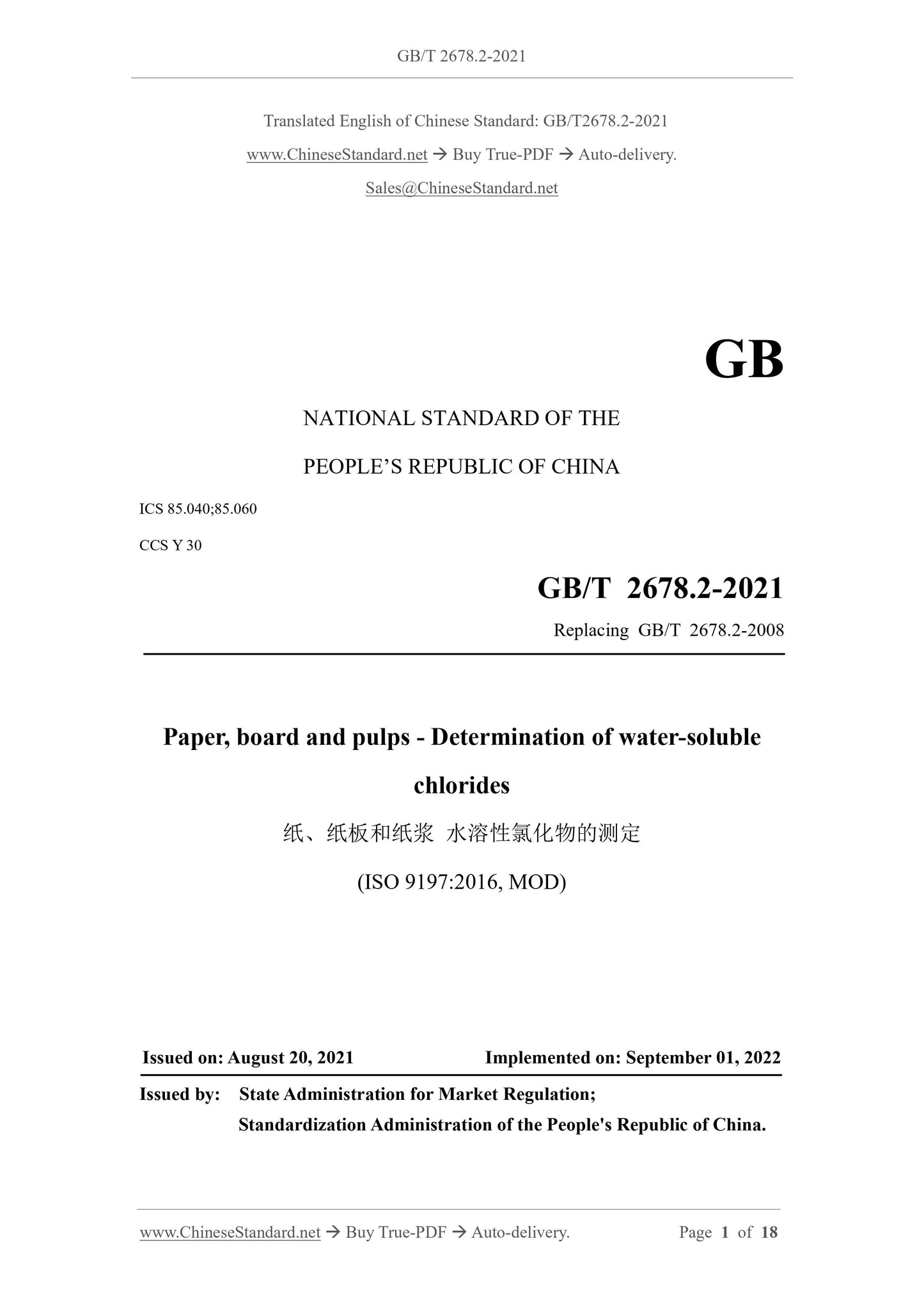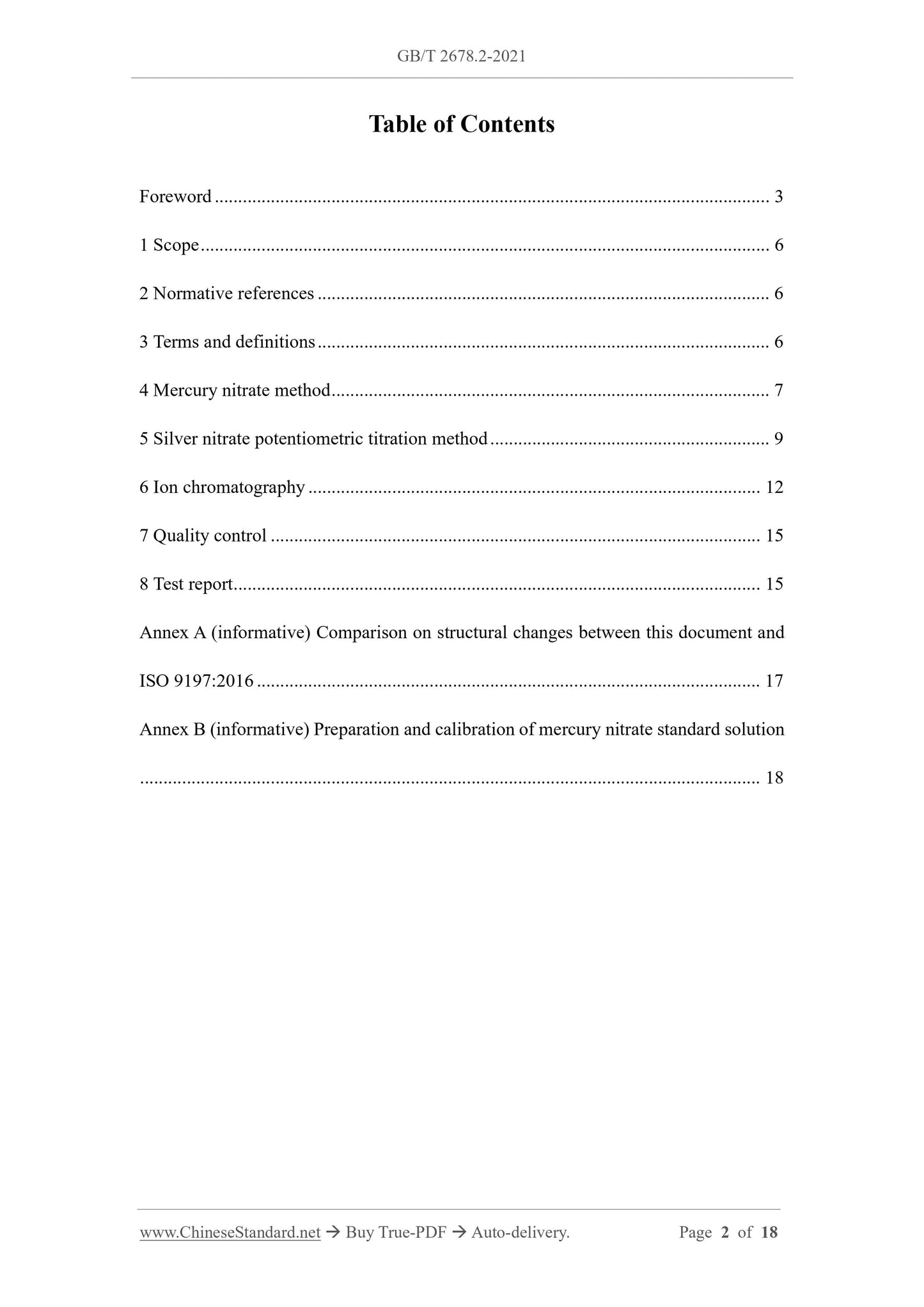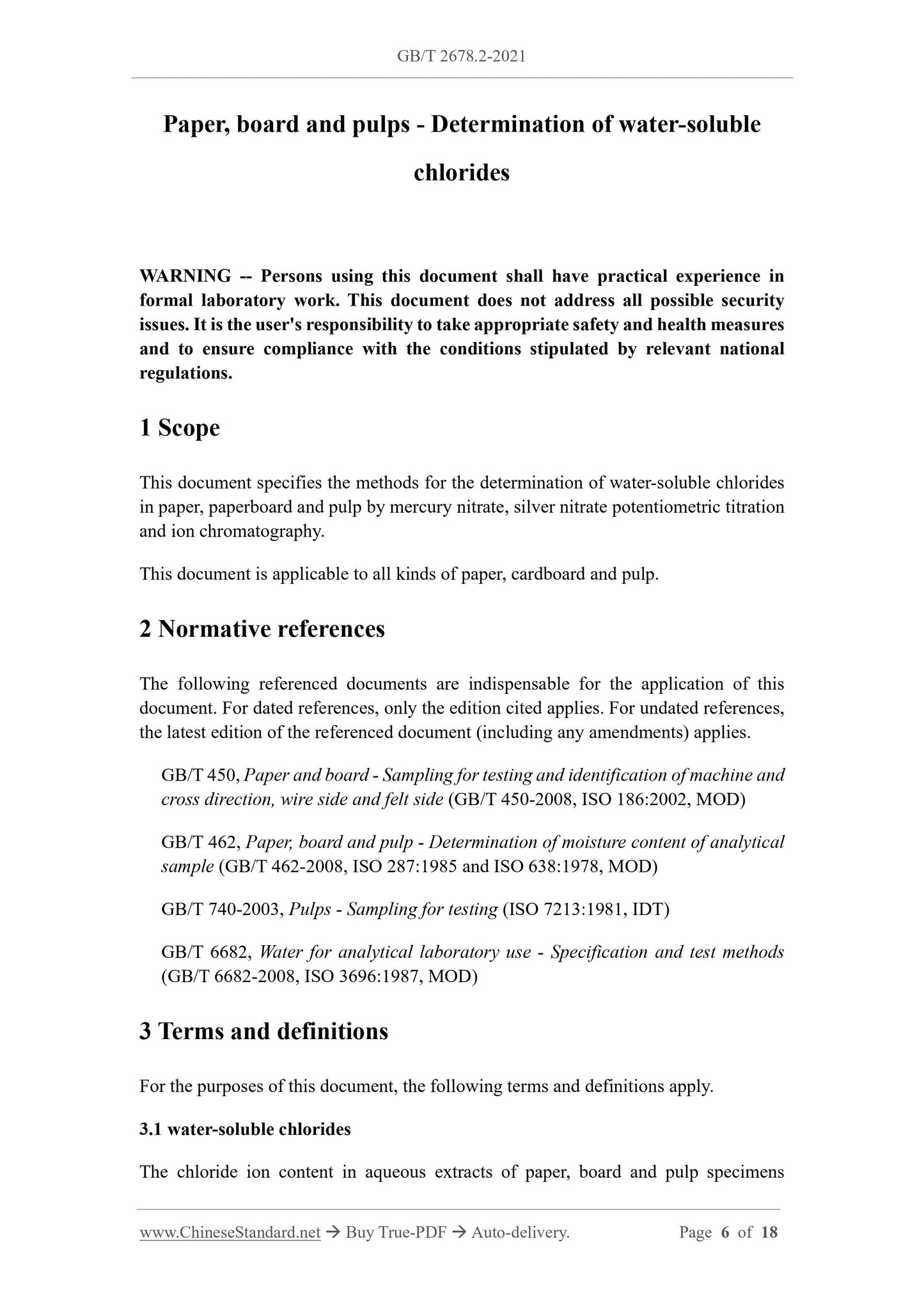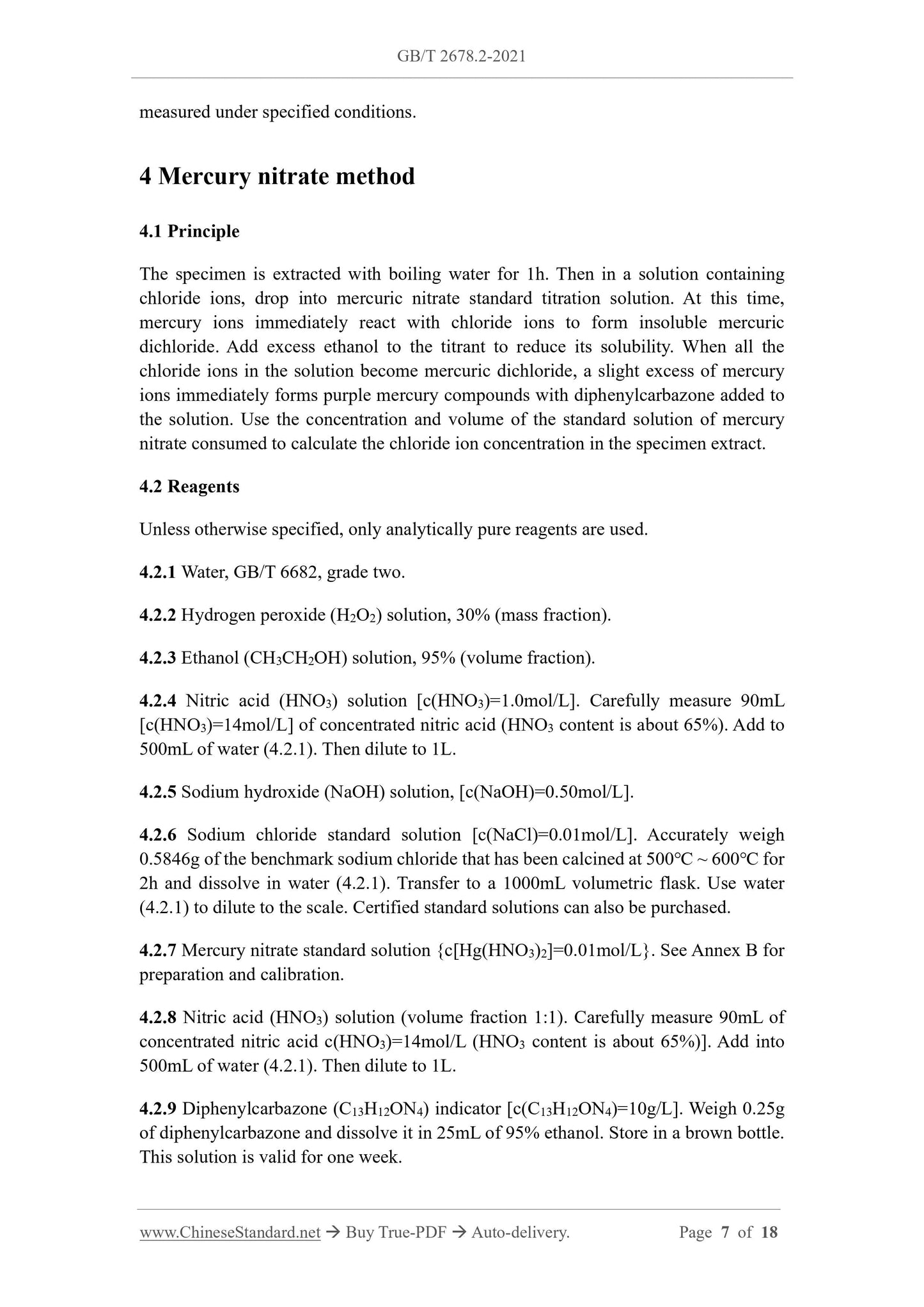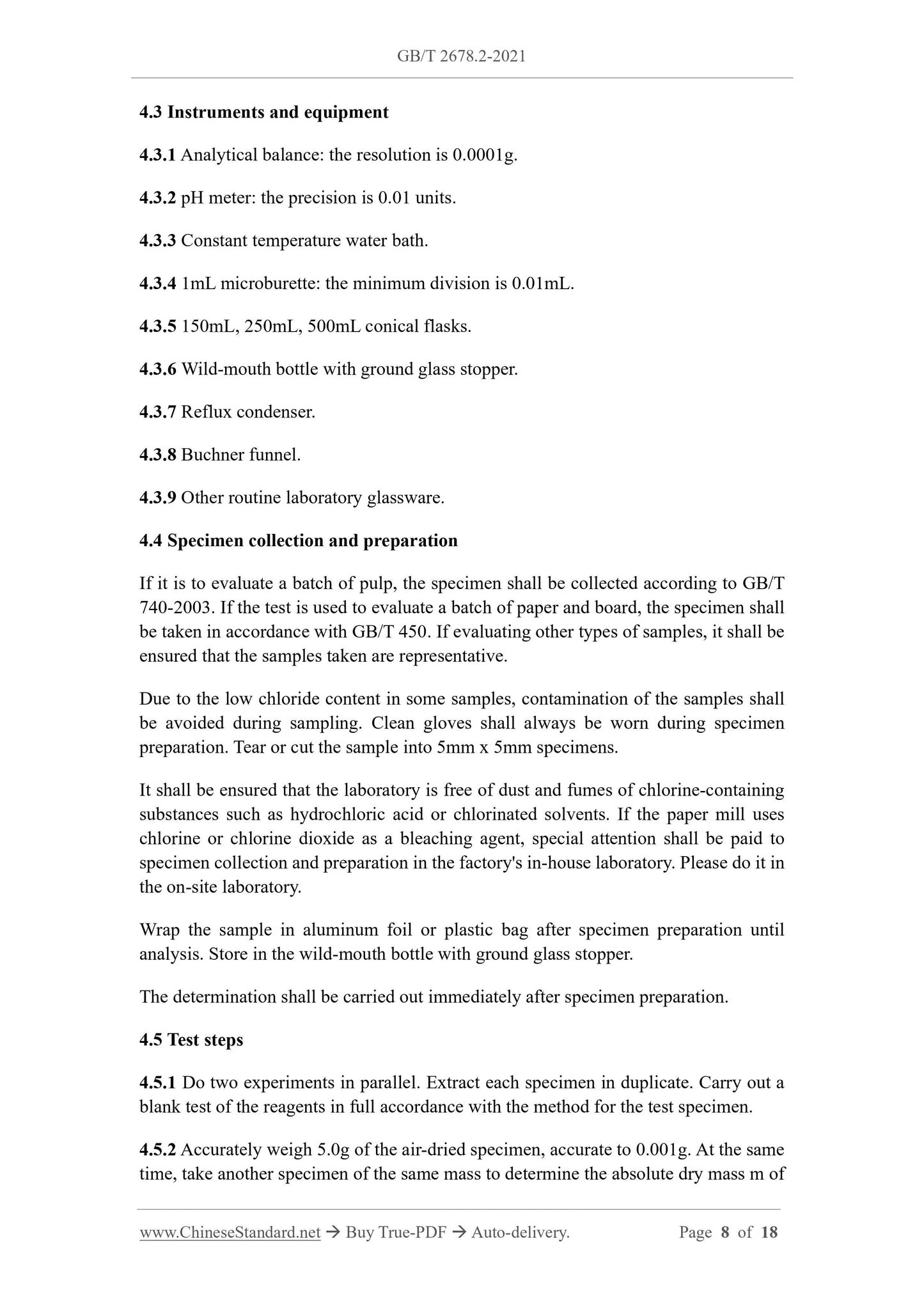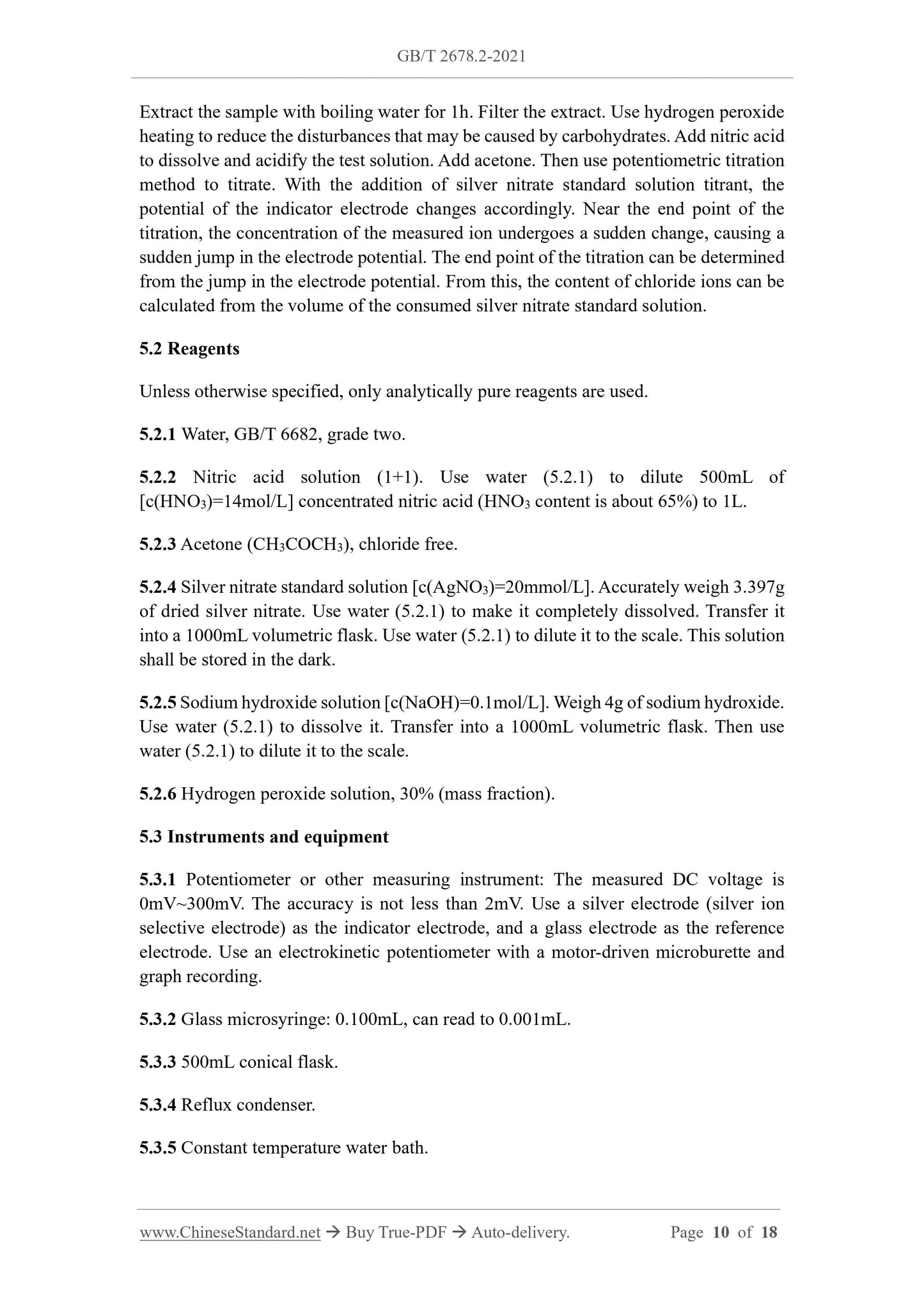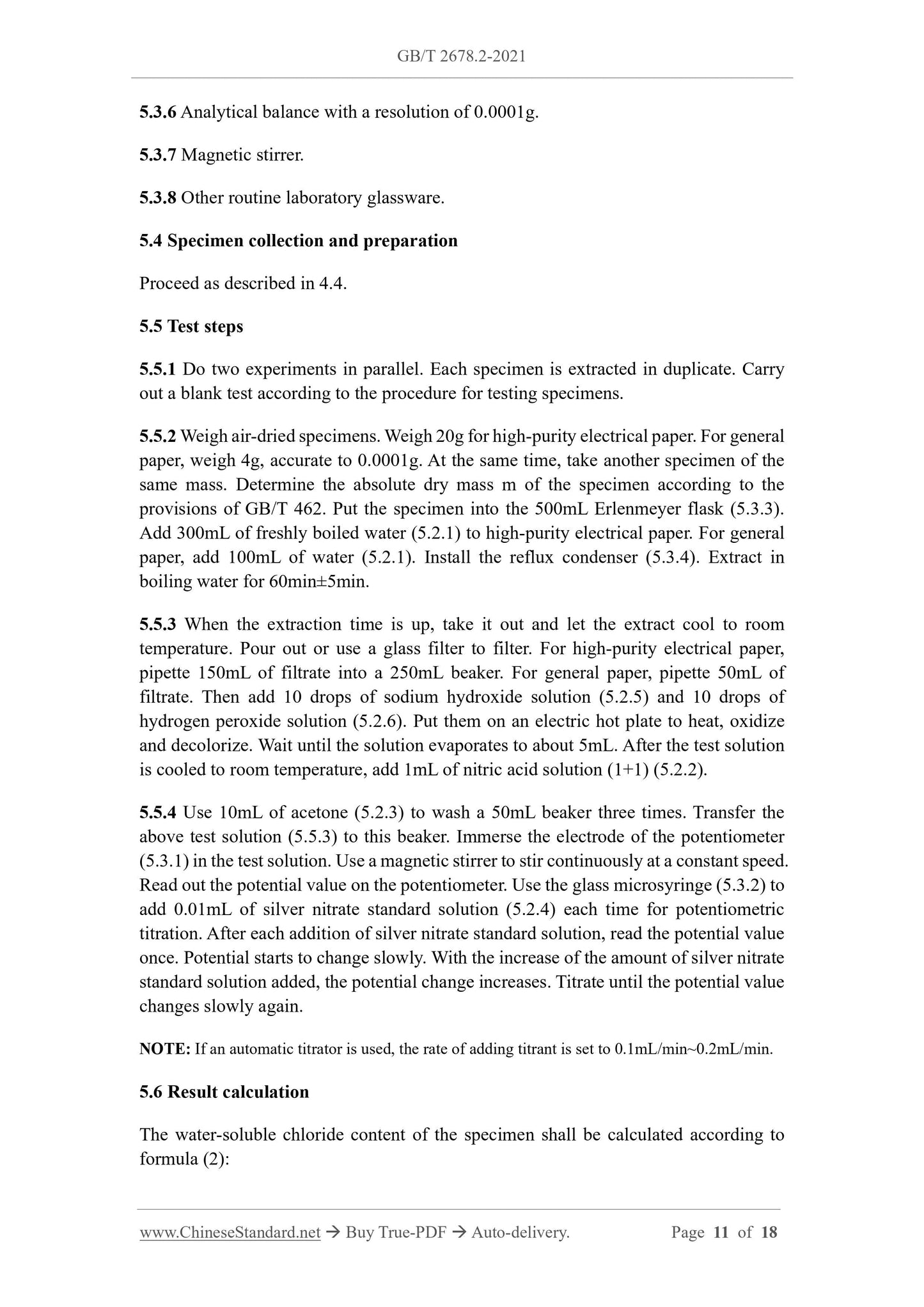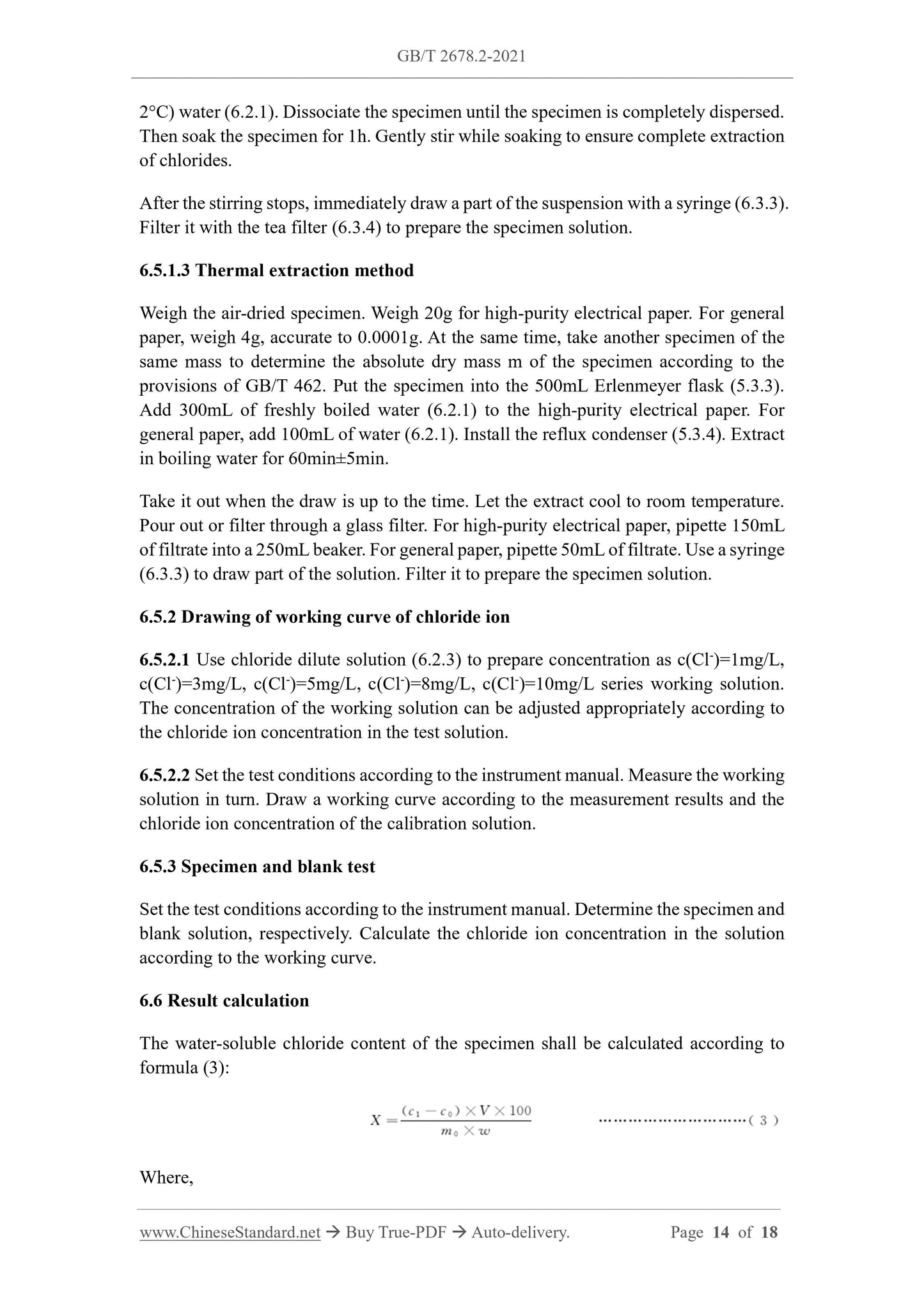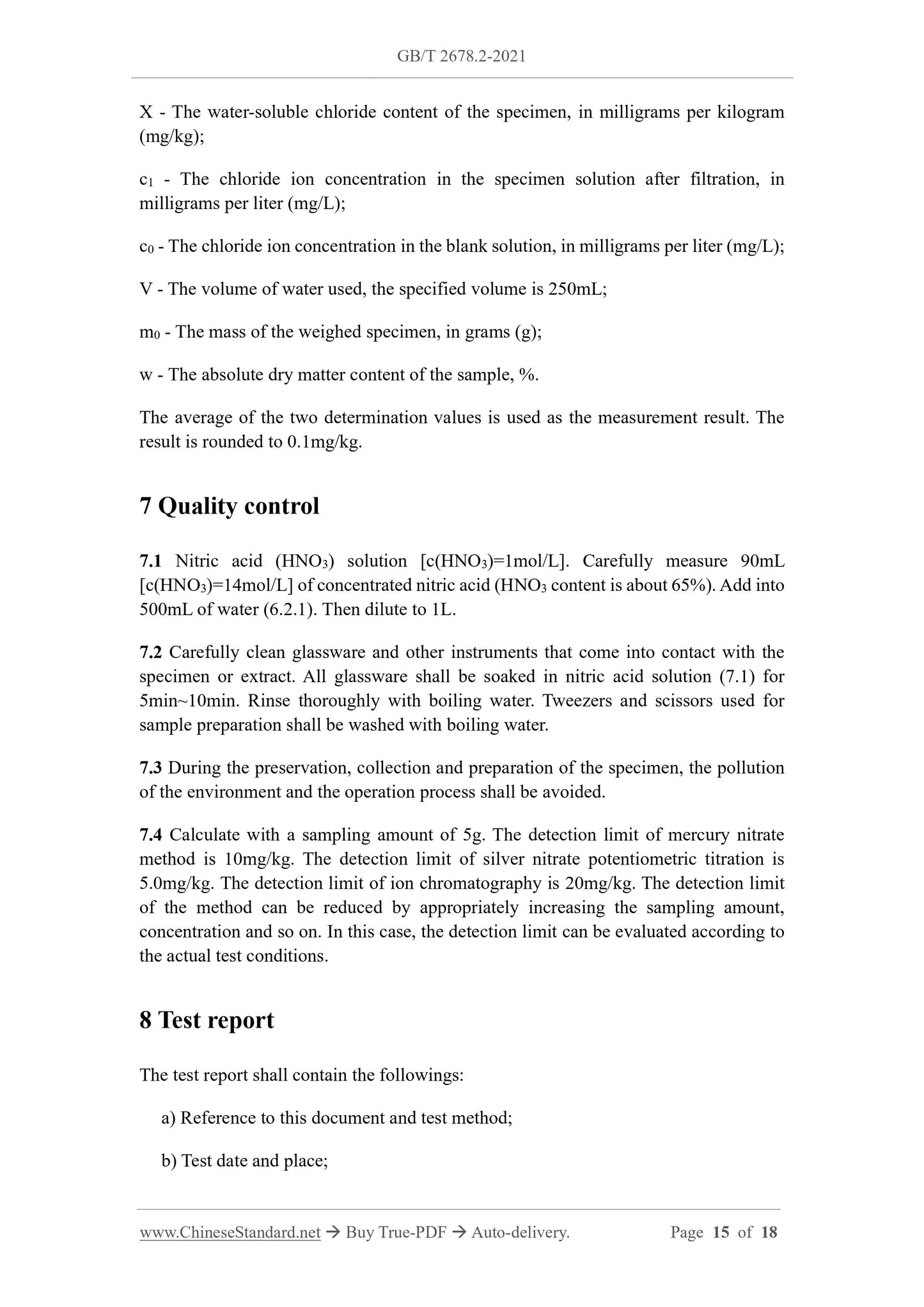1
/
of
9
www.ChineseStandard.us -- Field Test Asia Pte. Ltd.
GB/T 2678.2-2021 English PDF (GB/T2678.2-2021)
GB/T 2678.2-2021 English PDF (GB/T2678.2-2021)
Regular price
$230.00
Regular price
Sale price
$230.00
Unit price
/
per
Shipping calculated at checkout.
Couldn't load pickup availability
GB/T 2678.2-2021: Paper, board and pulps - Determination of water-soluble chlorides
Delivery: 9 seconds. Download (and Email) true-PDF + Invoice.Get Quotation: Click GB/T 2678.2-2021 (Self-service in 1-minute)
Newer / historical versions: GB/T 2678.2-2021
Preview True-PDF
Scope
This document specifies the methods for the determination of water-soluble chloridesin paper, paperboard and pulp by mercury nitrate, silver nitrate potentiometric titration
and ion chromatography.
This document is applicable to all kinds of paper, cardboard and pulp.
Basic Data
| Standard ID | GB/T 2678.2-2021 (GB/T2678.2-2021) |
| Description (Translated English) | Paper, board and pulps - Determination of water-soluble chlorides |
| Sector / Industry | National Standard (Recommended) |
| Classification of Chinese Standard | Y30 |
| Word Count Estimation | 14,161 |
| Issuing agency(ies) | State Administration for Market Regulation, China National Standardization Administration |
Share
